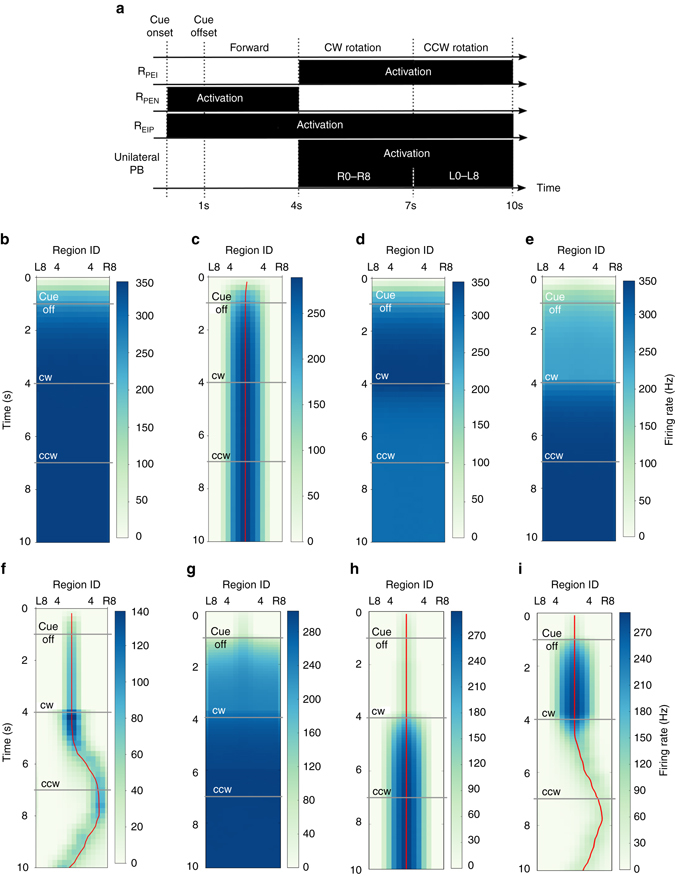Fig. 5.

Maintenance of spatial orientation memory requires coordinated operation of the ring neurons in the full EP–PB model. a The full model was tested using a task consisted of four periods in the following order: cue-onset, cue-offset/forward walking, clockwise, and counter clockwise body rotation. RPEN ring neurons activate (to inhibit the P-ring) during the cue-onset and cue-offset periods, while RPEI ring neurons activate (to inhibit the C-ring) during both rotation periods. REIP needs to be activated throughout the entire period of the task in order to maintain the activity bump, while the unilateral PB input is responsible for shifting the bump during the rotation periods. We tested the functions of the ring neurons by including them one at a time and demonstrated the result in the region-based firing rate plots for the EB (as in Fig. 3a) with the following conditions: b no ring neuron, c with REIP neurons only, d with RPEI neurons only and e with RPEN neurons only. We also tested the full model by taking out each ring-neuron type one at a time from the model with the following conditions: f the full model, g REIP lesion, h RPEI lesion and i RPEN lesion. The result indicates that only when all ring neurons function properly (f), the model circuit is able to maintain a sharp activity bump that encodes the spatial orientation memory. Although a functioning activity bump was also formed in the condition of RPEN neurons lesioned (i), the activity bump was too broad. In b–i, the red line is the estimated center of the activity bump
